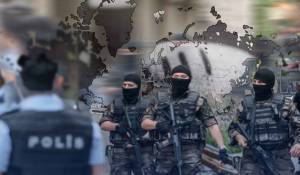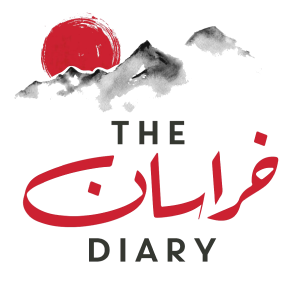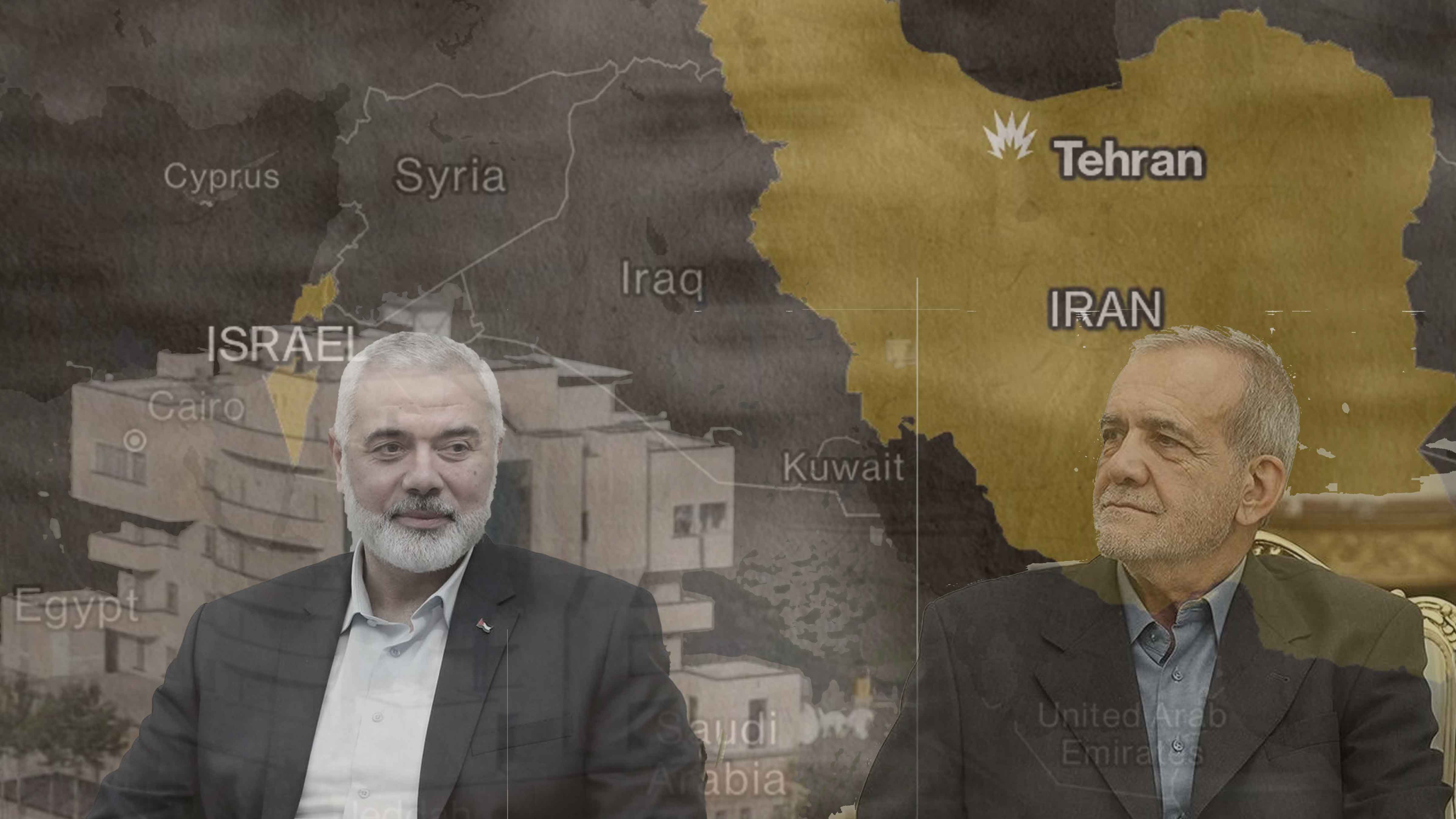
Roberto N.

December 21, 2025
By | Roberto N.

The inauguration of Iran’s new President, Masoud Pezeshkian, on July 30 was the occasion for the arrival of many foreign dignitaries in the Iranian capital of Tehran. After a busy day, with the delegations moving around the crowded areas of the city according to their own programs, the night approached quickly and calmly. Or at least it was supposed to be.
At around 1:45 am local time, the sound of an explosion shattered the quiet of the northern area, one of the most affluent parts of the city, close to the Tajrish Square where many senior officials, diplomats, and other expatriates live. The area is also close to the Saadabad Palace Complex, sprawling across the foothills of Mount Tochal, covering 300 hectares with gardens, palaces, and museums, not far from the Alborz Mountains.
People living in the area told this scribe that the sounds of the explosion were particularly strong and caused an intense vibration of the window glasses in their houses.
After a few hours, the Iranian authorities confirmed the death of Ismail Haniyeh, the leader of the Hamas movement’s political bureau, who was in the Iranian capital to attend the inauguration of the new president.
The first statement from the Islamic Revolutionary Guard Corps (IRGC) was issued at 6:10 am local time, acknowledging the “martyrdom” of the Hamas leader along with one of his bodyguards. It was later reported, without confirmation, that Ismail Haniyeh was a guest of the Iranian government at a special residence for the veterans of the 1980-1988 Iran-Iraq war.
Other foreign dignitaries were also staying as guests at the complex. It was a moment of sheer embarrassment for the Iranian security apparatus due to the lapse. As a result, an urgent meeting of the Supreme National Security Council (SNSC), headed by the President, was immediately held, reportedly with the participation of the country’s de facto leader, Ali Khamenei.
During the meeting, a preliminary assessment was discussed concerning what could have caused such a massive failure of the security apparatus. One of the first assessments of the Iranian investigators revealed that cells within the country may have used a drone, in particular a quadcopter, which could have identified the Hamas leader either through a tip-off from somebody close to his inner circle or thanks to the mobile phones Haniyeh used to have with him.
The Iranian security apparatus has previously intercepted components of small drones, reportedly intended for assembly within the country. These components are believed to have entered Iran through Iraqi Kurdistan, where Iranian intelligence suspects Mossad maintains operational bases. The complex techno-modalities used by Mossad to kill Mohsen Fakhrizadeh in November 2020 could have also been employed against Haniyeh.
Unconfirmed reports have suggested that the attack may have been facilitated by spyware installed on Haniyeh's phone through his WhatsApp account, enabling precise location tracking. This could have been facilitated by the fact that Haniyeh was not afraid of making public appearances and did not expect to be targeted, likely due to his role as a negotiator with Tel Aviv. He never went into hiding, according to various sources.
Another possibility is that the attack could have been carried out through a long-range missile, eventually from a neighboring country. However, this scenario is generally considered unlikely, as it would have required the complete failure of the entire security apparatus along the border, within Iranian territory, and not just within the capital.
The idea that Mossad could have carried out such an attack at the heart of the capital sent shock waves to the circle of power around Khamenei at a moment when Hezbollah confirmed that one of its senior military commanders, Fuad Shukr, was killed in an Israeli air strike in Beirut, the capital of Lebanon.
Both attacks have been seen by the Iranian leadership as a direct challenge to the “axis of resistance”, something which would require a direct, strong response. On August 1, 2024, The New York Times published an investigation according to which Ismail Haniyeh was killed by an explosive device hidden in his room. The content of the investigation did not fit either the official narrative of the Iranian officials or the witnesses' accounts collected close to the targeted area.
Indeed, the IRGC published a report stating that the Hamas leader was killed by a short-range projectile with a warhead of about 7 kg, something which would contradict the NYT narrative.
Some Iranian analysts assessed that the missile could have been launched by the surrounding hills, adding that an Israeli Spike ATGM (anti-tank guided missile) featuring HEAT (high explosive anti-tank) warhead could have possibly been used.
Later on, the assumption that a bomb could have been used in the attack was dismissed by other sources inside the country, including by Zohrevand, a lawmaker of the Majlis Commission of National Security and Foreign Policy, who confirmed that the projectile was actually fired from a micro-drone or quad-copter.
Some Iranian analysts accused the NYT of presenting a false narrative to highlight the failure of the security apparatus. In their assessment, the aim of the unknown “sources” of the article would be to present the attack as the continuation of the “cover war” that has been going on inside the country for a decade while admitting the “missile scenario” would imply recognition of a “military attack” which would give Teheran the right to claim a retaliation as a “legitimate defense”. The acting Foreign Minister Ali Bagheri Kani was preparing the ground to present the case at the UN bodies.
It was indeed clear since the attack that Tehran would pursue a double parallel strategy. While the security/military apparatus would prepare the ground for military retaliation, possibly harsher than the one implemented in April, the Ministry of Foreign Affairs, through the acting Foreign Minister Khani – who is close to Khamenei – would present the case of the “military attack” in the international fora, especially with the diplomatic contacts with neighbors and the Arab countries.
Internally, an investigation into the massive intelligence failure was immediately launched to highlight the responsibilities of the security apparatus supposed to protect the foreign guests.
A report by NYT claimed that over two dozen individuals, including senior intelligence officers, military officials, and even the staff of the guesthouse where Haniyeh stayed, had been detained in relation to the event. The idea that its security apparatus in the capital would be somehow infiltrated by the Mossad sent a strong signal of “weakness” to allies and foes alike.
Sources in Tehran told this author that IRGC’s intelligence organization arrested and interrogated officials from the municipality of Tehran, suspected of being involved in the operation that led to the death of Haniyeh. Those officials accompanied Haniyeh to the Milad Tower exhibition after the ceremony of the swearing-in of President Pezeshkian. The assumptions under investigation would be, according to the mentioned sources, that it was likely on the occasion of this ceremony that Mossad agents approached and monitored his moves into the heart of the Iranian capital.
As far as the diplomatic track is concerned, a meeting of the Organization of Islamic Cooperation (OIC) at the level of foreign ministers to discuss the Palestinian situation and the assassination of Haniyeh was held in Jeddah on August 7.
In the following days, while the expected retaliation did not take place, reportedly because the Iranian security apparatus was coordinating the preparations with their counterparts from the “Axis of resistance”, a military exercise was held in the morning of August 8 in the central and western part of Iran, involving both IRGC and the Army (Artesh).
As days passed by, the Iranian leadership was assessing the various options regarding how to retaliate against Israel. Hardline IRGC commanders pushed for a severe response. The reformist newly elected president, engaged in the intricacies of selecting the new ministers to propose to the Majlis, shared the rhetoric widely promoted by the highest echelons of the Iranian circle of power.
The hardliners called for a more severe retaliation in comparison with the events of April last when IRGC fired more than 300 drones and missiles toward Israel in response to the Israeli killing of seven Iranian officers who were inside the Iranian Consulate in Damascus.
The military response was indeed considered by influential radicals and hardliners as “too soft” as most of the missiles were intercepted before hitting their target. They argued that the attack, the content of which was largely anticipated by Israel and the US, failed to provide the required strategic deterrence against Tel Aviv and the killing of Haniyeh in the heart of the Iranian capital was just the result of the weakness of the April response. For this reason, they are currently pushing for a more “robust” and decisive retaliation.
The IRGC high command, in his public statements after the attack in Tehran, hints at a coordinated retaliation, involving Iran’s proxies, in particular Hezbollah in Lebanon and the Houthis in Yemen. The retaliation would be all the more effective, they argue, if Israel will have to defend itself on multiple fronts.
While acting Foreign Minister Khani said that the Iranian response would be “powerful and definitive”, many foreign officials visited the Iranian capital in an attempt to push Tehran for a “moderate” retaliation, including Jordan Foreign Minister Ayman Safadi. Meanwhile, others called for “not falling into Israeli trap” at a moment when the new reformist president has repeatedly stated Iranian readiness to restart talk with the US.
Abdolreza Davari, a politician and media advisor to former Iranian President Ahmadinejad, argued that “In order to condemn and isolate Israel internationally, it would be necessary first to promote a regional and global consensus”. He added that “hitting Israel now would mean losing such an opportunity”.
There is, however, agreement among the analysts that Khamenei, while pushing hard his rhetoric, has zero interest in promoting an escalation with Israel which could spiral out of control, eventually dragging the US into a regional conflict whose consequences would be unpredictable for Tehran.
While the US reportedly sent messages through various channels to the Iranian leadership to avoid the harsher scenario, inside the circle of power close to Khamenei, different opinions emerged, with the military/security apparatus and the media close to Khamenei (like Kayhan) pushing for strong and direct military retaliation. Meanwhile politicians and intellectuals, in particular those close to the reformists and President Pezeshkian, asking for a more moderate approach.
In a letter sent to the new leader of Hamas Yahya Sinwar, the commander of IRGC Qods Forces, Ismail Qaani, wrote that “revenge of martir Haniyeh is certain” adding “it is our duty to avenge his blood for this tragic incident in the Islamic republic”.
Overall, it will be difficult for the Islamic Republic not to implement what has been promised at the highest level (even by Khamenei himself) when it comes to retaliation toward Israel. Consultations with the other actors of the “Axis of Resistance” and in particular with Hezbollah are going on at the moment.
Some analysts believe that there is a possibility that Tehran could first wait for Hezbollah’s response to Fuad Shukr’s death. Some reports emerged on August 9 saying that a possible summit aimed to finalize the Gaza hostage and ceasefire deal could change the equation as it would offer Tehran a marge of maneuver to present the “limited progress” achieved as the result of the pressure of the threatened retaliation.
At the time of writing nothing is certain. The actors involved are nevertheless aware that at the moment the stakes are too high and every move has to be carefully calibrated.